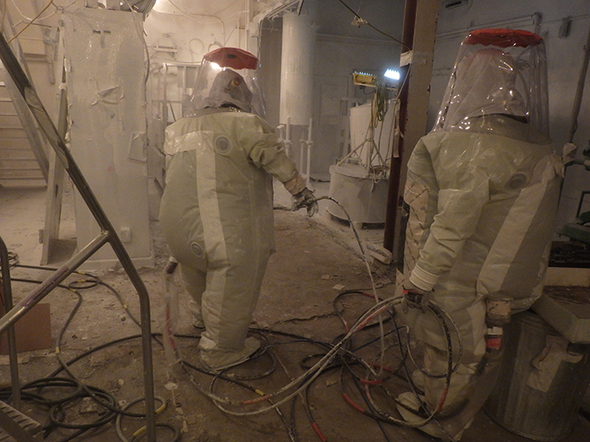REFRESH: The Power of Power Uprates
Since this blog post first ran in December 2011, the
NRC staff has approved 16 additional power uprates, increasing the
nuclear fleet’s output by an additional 1300 megawatts electric. An
additional three are under review (for the three reactors at Browns
Ferry), and the staff expects to receive an additional 10 uprate
applications through the end of September 2017. David McIntyre
Neil Sheehan
Public Affairs Officer
Region I

Much
news space has been devoted over the years to the prospects for new
reactors in the U.S. However, new reactors are not the only way the
nation’s share of nuclear-generated electricity can be increased — and
it doesn’t involve earth-movers, the construction of new buildings or
other changes visible to the casual observer.
Another option available to nuclear power plant owners is to pursue a
power uprate, which essentially means an increase in the maximum amount
of power a reactor can generate. But before a power uprate can be
implemented, it must first undergo a thorough review by the NRC.
Take for example, the NRC’s approval of a 15 percent power uprate for the
Nine Mile Point 2 nuclear
power plant in upstate New York. That approval was the culmination of
an NRC review that began with the submittal of the application on May
27, 2009.
During the course of the agency’s evaluation of the proposal, NRC
staff scrutinized data regarding the proposal and posed dozens of
technical questions to the plant’s owner, Constellation. They included
queries about the effects of greater stresses on piping and the plant’s
steam dryer, a component at the top of the reactor vessel, as a result
of operations at higher power levels.

The NRC does not proceed to a final decision until all such questions are answered to our full satisfaction.
Uprates are not a new development. In fact, the NRC approved the
first uprate back in 1977 and has to date approved 140 such
applications. All told, the uprates have led to an increase in power
output nationwide of about 6,000 megawatts electric.
There are three different kinds of power uprates: “measurement
uncertainty recapture” uprates, “stretch” uprates and “extended”
uprates. Here’s a brief description of each:
Measurement uncertainty recapture uprates – They involve an increase
of less than 2 percent and are achieved by implementing enhanced
techniques for calculating reactor power levels. State-of-the-art
devices are used to more precisely measure feedwater flow, which is used
to calculate reactor power.
Stretch uprates – The increases are typically between 2 and 7 percent
and usually involve changes to instrumentation settings but do not
require major plant modifications.
Extended uprates – Power boosts of this type have been approved for
increases of up to 20 percent. They usually involve significant
modifications to major pieces of non-nuclear equipment, such as
high-pressure turbines, condensate pumps and motors, main generators
and/or transformers. The Nine Mile Point 2 uprate would fall into this
category.
For more information on power uprates, visit the NRC
web site.






 Much
news space has been devoted over the years to the prospects for new
reactors in the U.S. However, new reactors are not the only way the
nation’s share of nuclear-generated electricity can be increased — and
it doesn’t involve earth-movers, the construction of new buildings or
other changes visible to the casual observer.
Much
news space has been devoted over the years to the prospects for new
reactors in the U.S. However, new reactors are not the only way the
nation’s share of nuclear-generated electricity can be increased — and
it doesn’t involve earth-movers, the construction of new buildings or
other changes visible to the casual observer. The NRC does not proceed to a final decision until all such questions are answered to our full satisfaction.
The NRC does not proceed to a final decision until all such questions are answered to our full satisfaction.


